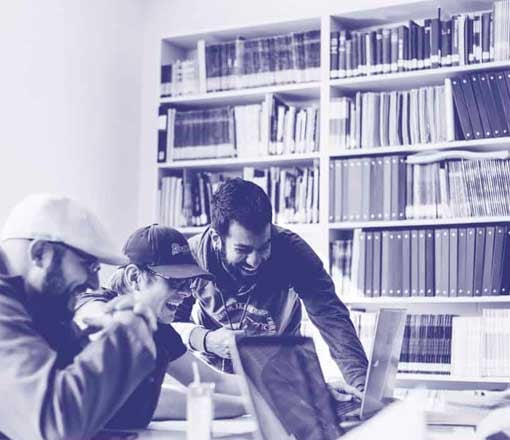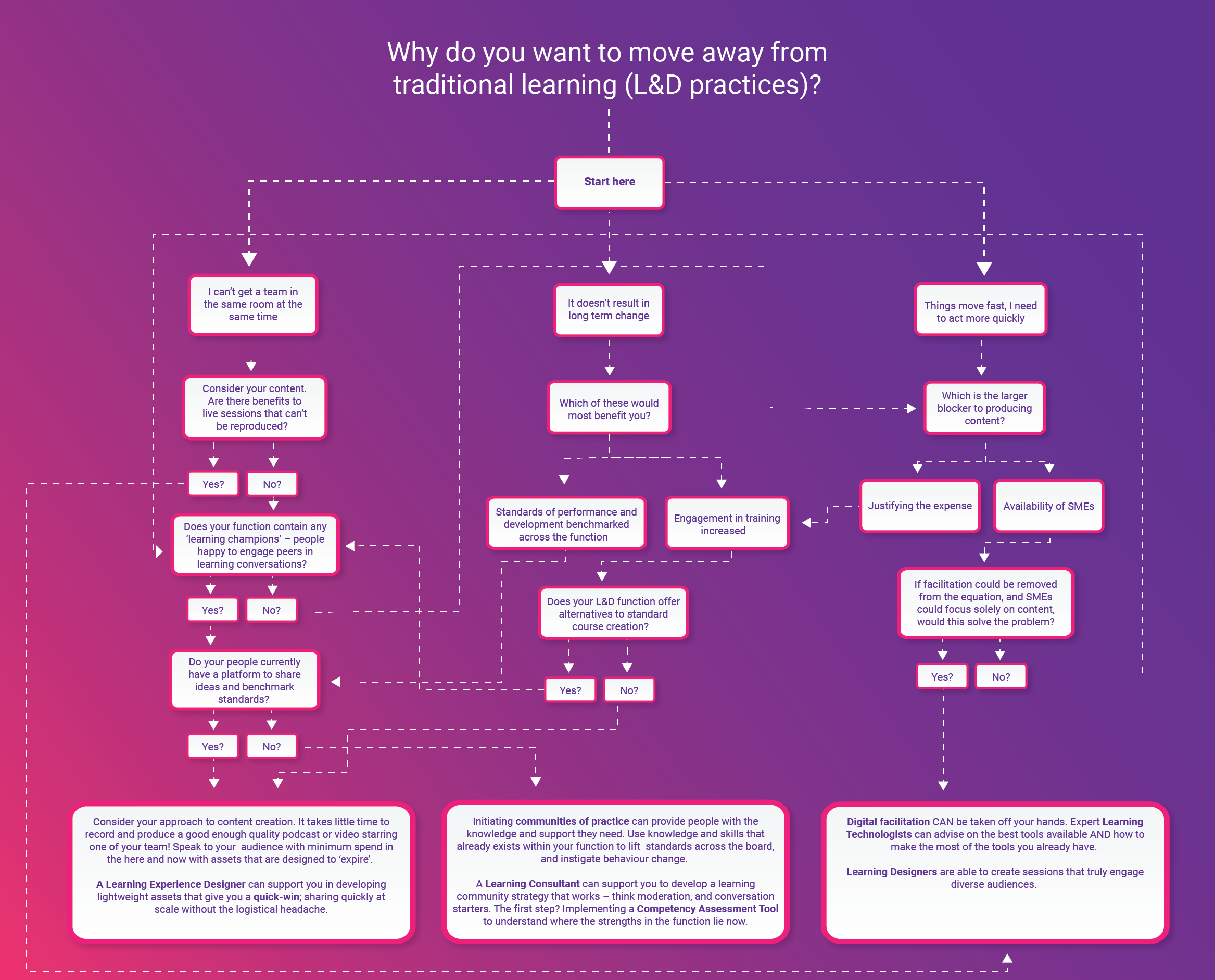Is data-driven learning driving you to distraction? Don't despair, our Learning Experience Designers, Anna Dillon and Kate Middleton, have distilled the dialogue for you – to deftly differentiate between the drivel and the direct.
Data - The Idiot’s Guide to Data-Driven Learning

Anna, can I ask you something, and can you promise not to tell anyone?
11:28
Oooooh... Yes, of course! Sounds intriguing!!!
11:30
Do you know what data-driven learning is??
11:32
- 😄 Aha – a very good question! Yes – it's using data to make digital learning more effective by making it more specific, for instance by finding out where the gaps are in learners' knowledge and then designing learning to fill those gaps.
If you gather the right statistics on your learners' strengths and weaknesses, and on their engagement preferences, you can tailor the learning better to their needs and favourite ways of learning online. Does that make sense?
11:36
Yes it does 😊
11:37
Think clever and tuned-in-teacher, rather than Big Brother!
11:38
I guess I was looking at the wrong end of the learning...the data produced by the learning? We are starting to focus on that more too, aren't we?
11:39
Yes, we definitely are. The 'end of the learning' you mention is not even the wrong end – you can use data from either end of the learning – before or after! Some people make a distinction between these using the terms 'prescriptive learning' and 'diagnostic learning'.
If you're working in L&D in a big organisation, you could take simple data like how your learners engage with your intranet, or the LMS (frequency, times of most activity, top searches, failed searches, drop-off rates) and then use this information when you're designing their learning.
You remember Lori Niles-Hofmann's story about a company finding out that their cafeteria menu page was a good place to market their learning? It could be something as simple as that – using learners' online trends and preferences wisely.
11:46
Ok, I can see how that would be helpful for L&D. When do we start helping the learners though, drop off rates can tell us when they’re getting bored – but do you think we will get to the point where we can learn...what learners can't learn? 😄
You see what I mean? Can we as LXDs start to use this info – not just the digital designers?
11:48
Yes, I see what you mean – and the answer is: most definitely!
11:49
The ideal would be learning what learners are really struggling with – the fact that they NEED to know that information is not going to change, so if we could figure out what those tough points are – L&D will know they need to invest the resources and we can start getting creative with the solutions!
11:53
Exactly! We can use learning analytics – like data from scans or assessments of learners' knowledge – to see which areas they're struggling in. Then, we can focus their next piece of learning on that particular topic, to help them fill the gap.
It's all about making the learning more targeted, more specific – and the good news for L&D is that this makes the learning assets smaller and so, cheaper to produce.
We can then unleash our creative dragons in putting together the right combination of assets – like, an interactive video, a timeline and a quickfire quiz – to plug that knowledge gap in the most memorable and effective way.
11:57
So, DDL isn't hunting for the data, or producing it for the sake of the stats, it's harvesting it, and letting it help people make the right decisions.
To go a step more metaphorically – as I am wont to do – the data's not driving L&D, but it's holding the map?
11:59
Spot on! I was thinking of a satnav myself, earlier, as a good analogy for it – snap!!! Ultimately, harvesting the data allows L&D to make learning more enjoyable and beneficial for the learner, and to make it more beneficial for the entire organisation. It's a win–win!
12:01Speak to us today if you would like to discuss how our learning experience designers can help you practically apply data-driven learning in the workplace.
Bring rapidly developed, data-driven elearning into the heart of your learning strategies with Verify by Logicearth. This fully-managed microlearning service provides meaningful insights from your learning programmes to determine where the focus truly needs to be. Spend your budget wisely by pinpointing knowledge gaps and focus solely on delivering the content you require. Contact us for an informal chat about your elearning needs today.









Was this article helpful?